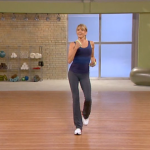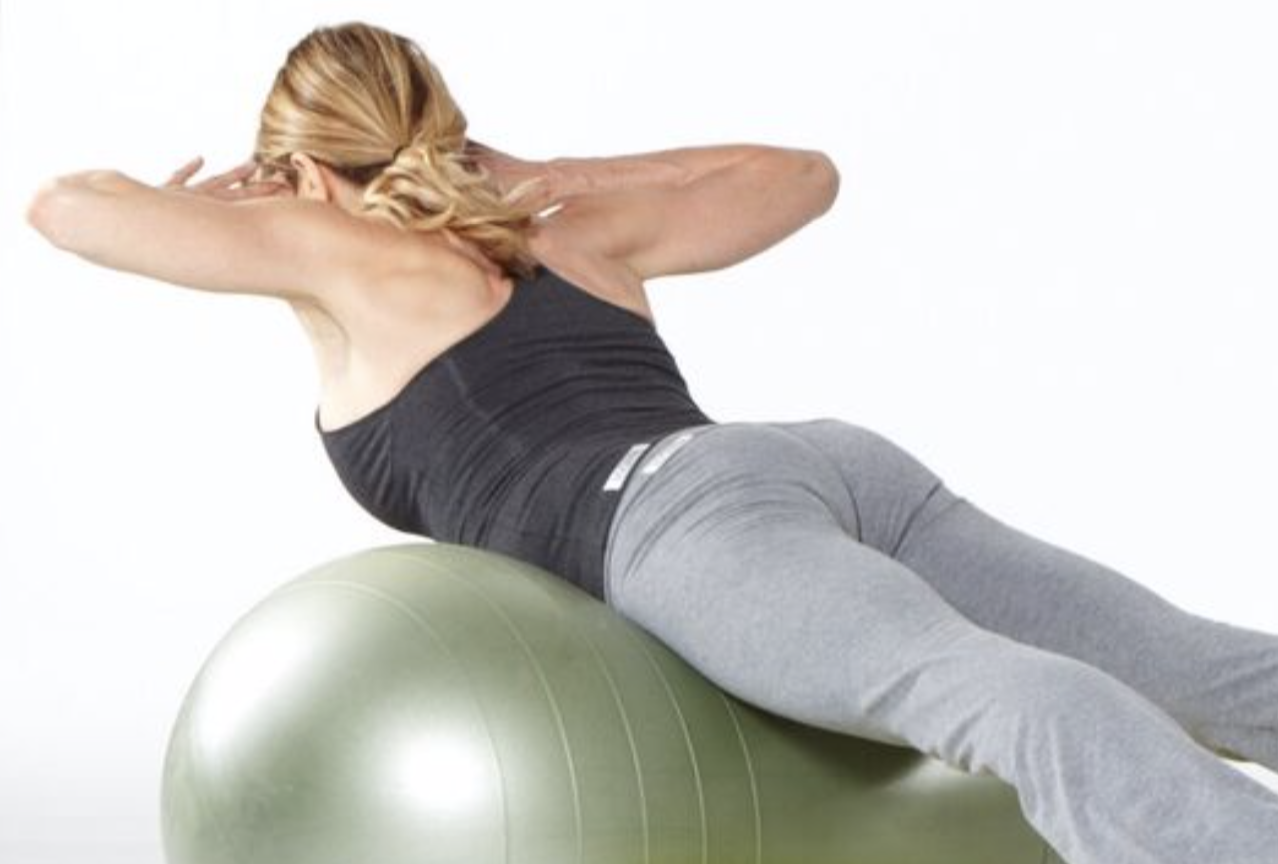10 Minutes A Day Keeps The Belly Fat At Bay
If only you had more time in the day, then you would exercise more. How many times have you told yourself that? A lack of time is the number one excuse I hear about why people don’t work out more consistently. And it’s true…we all live busy lives! But what if I said that you could unlock the key to weight loss and get the same—or better—results in 10 minutes of exercising than you used to get from 40 to 60 minutes?
Research is showing us that less than 30 minutes of high intensity interval training (HIIT) three times a week is just as effective as moderately exercising for 40 minutes or longer four or five days a week. Some studies actually determined that it is more effective at toning muscles, burning calories and improving insulin sensitivity! And just to add a few more reasons to start interval training, listen up. Interval training helps you better tolerate stress, age more gracefully, releases endorphins to make you happier, promotes muscle-tones, and burns fat even hours after your workout is finished.
But let’s take a step back….Interval training, HIIT training…what is it? Interval training (also known as High Intensity Interval Training, or HIIT) refers to the extra energy and intensity added to a workout, usually in quick spurts. Say you’re jogging along at a moderate, comfortable pace, but then for the next 30 seconds, you run at a full sprint before dropping back into a comfortable pace (a recovery period). Then you repeat the pattern for several minutes.
That short burst of extra effort is an interval, and while it doesn’t last very long, it creates very positive results. This style of exercise has been the needle-mover for millions of women on their journey through weight loss. And the best part is, you don’t need any fancy gym equipment. You can practice intervals while walking down the street or while riding your bike through the park.
So let’s take a closer look at why interval training is so efficient that it only requires a few minutes, and how it can help you work toward a healthier, leaner, more confident you.
Interval Training Engages ALL Of Your Muscle Fibers
I’ve been a fan of interval training for decades, because I like the “surprise burst” it gives muscles and the results that come from it. Plus, intervals demand that more muscle fibers engage in a more intense manner.
But what does that mean? We all know the basic muscle groups in the body, such as the abdominals, deltoids and quadriceps. What’s not as commonly known is that we have three types of muscles: slow, fast and super-fast twitch. The slow and fast muscles are needed to carry out most everyday activities as well as many endurance or aerobic exercises. However, approximately half of our muscles are super-fast twitch, and oftentimes, they don’t get the workout they deserve. In fact, they only engage during high intensity intervals. So when you’re sprinting for those 30-seconds, you’re using all three muscle types at once, and that super engagement leads to better toning.
What’s more, several studies have reported an increase in humane growth hormone (HGH) production associated with HIIT. A shocking British study even noted that individuals had a 530% increase in HGH levels after 30 seconds of sprinting. Don’t be scared…this isn’t the controversial HGH allegedly used as a performance-enhancing drug among elite athletes. Rather, it’s a natural hormone your body creates to help build muscle.
Interval Training Burns Calories For HOURS After Your Workout
One of the ways we measure the effectiveness of an exercise is by the number of calories the activity burns. And the greater the number of calories used up, and we associate that with the amount of fat that we burned away. When thinking in those terms, it might not seem like a 10-minute HIIT workout will be enough time to use up enough calories to burn any fat. Not so fast! The reality is that you’ll continue to burn calories for hours after the 10 minutes of interval training have passed.
How can that be? As you exercise, your body establishes a certain metabolic rate that matches the workout rate. When you add in a surge of high intensity, then you’re telling your muscles to increase that rate, which in turn requires more calories or energy. So, yes, during the actual movement, you are using up more calories. But the burn doesn’t end with that single interval or even after the entire workout. It will take your body several hours to recover from these bursts of extra energy. During this time, your body will continue to burn calories at a higher-than-usual rate, a phenomenon called Excess Post-Exercise Oxygen Consumption (EPOC).
If you engage in HIIT workouts for 10 minutes three times a week, just think about how many calories you’ll burn from the EPOC reaction! If you want to think of it business terms, HIIT provides a huge return on investment. For example, a study from Australia followed women who did 8-second sprints on stationary bikes with 12 seconds of recovery time for three 20-minute sessions a week over nearly four months. A second group of women did moderate cycling for 40 minutes three days a week for the same period. Researchers discovered that the interval group lost an average of 5-1/2 pounds while the continuous cycling participants gained a pound of fat.
That’s not all…another study out of Canada found that adults performing interval training for two weeks were able to increase their fat burn by 36%.
Let’s get clear — burning fat isn’t exactly the same thing as burning calories. Calories come from the foods we eat and are converted into energy the body needs. If we don’t use up all those consumed calories, then our bodies store them away in fat cells to be used later. In order to get the maximum fat burn from a workout, we have to tap into those hidden fat stores, and bursts of high intensity intervals do just that. The increased physical demand triggers the body to release a greater amount of fat-burning enzymes in the muscles than it would during moderate exercise. Burst training may be the only way to break down the fat that’s tucked deep inside the muscle and convert it into fatty acid components that can be used as energy.
Interval Training Decreases Your Risk For Heart Disease
Other research has indicated that shorter, more intense workouts might be better for heart health. The heart is a strong muscle and is constantly working, so naturally, it needs a rest or recovery periods. In other words, unless you’re a seasoned marathoner, doing a lot of endurance exercises for long periods could prompt your heart to work harder than it would have to with short-yet-intense programs. The intermittent activity seems to be more well-suited to how the heart wants to naturally function.
Also, there’s evidence that HIIT promotes production of HDL, or the good cholesterol, as well as help keep your blood pressure in check. Basically, you need to grab with open arms all of the HDL that you can get! Aim to have HDL levels greater than 60 mg/dL, this will help lower your risk for heart disease. Of course, if you have any history of heart problems, always check with your physician before starting a fitness program.
Interval Training Works For You Because It’s Designed By You
The key to making 10-minute sessions of burst training work for you, is to make sure you have enough intensity. The Tabata Protocol is a common example of high intensity interval training. In the early 1990s, Professor Izumi Tabata was working with the Japanese speed skating team, and he instructed them to do 20 seconds of all-out, fast-as-you-can-go intense activity followed by a 10-second rest period, and then repeated the cycle eight times. The whole workout took only four minutes, but Professor Tabata was impressed with the results on multiple levels, including an improvement in endurance.
The Tabata Protocol has become the epitome of an extreme high intensity interval training technique, but you don’t have to take it to that level to produce results—remember, he was working with professional athletes. You have to determine your own level of intensity where you’re pushing as hard as you can. I like to visualize different faces to describe different intensity levels:
- When you’re at 60–75% of your maximum, you’ve got a “happy face.” Most of your long, slow training is in this range. At this level, you feel great, you’re relaxed and you can keep going for a long time.
- At 75–85%, that smile flattens out into a look of determination. You’re not talking. You’re focused, you’re on a mission and entering warrior mode.
- At 85–95% you’re giving near-maximum effort with a battle-cry face. You can just barely keep this up for a few minutes.
Alternating between your “happy face” and “battle-cry face” is the essence of interval training, and it will transcend the calorie-blasting limits of what you thought your body was capable of.
As you get more used to doing intervals, you’ll be able to expand the time you spend at battle-cry. You’ll also see an improvement in your endurance on the days when you have more time to do longer, slower workouts. In fact, to get the best results from your 10-minute HIIT exercises, it’s important to not do them every day, but to mix in different types of activities. This gives your body more time to recover, will help you avoid plateaus, and the variety will keep you interested in exercising.
The bottom line is that for the healthiest you, it’s important to not let time get in your way. If you have 10 minutes, you have time for high intensity interval training. My new FastFit DVD is all about 10-minute workouts. It includes five 10-minute exercises packed with heart-pumping HIIT moves designed to give you a maximum fat burn. With this workout, you’ll tone your entire body – your arms legs, glutes and core…and especially your abs!







